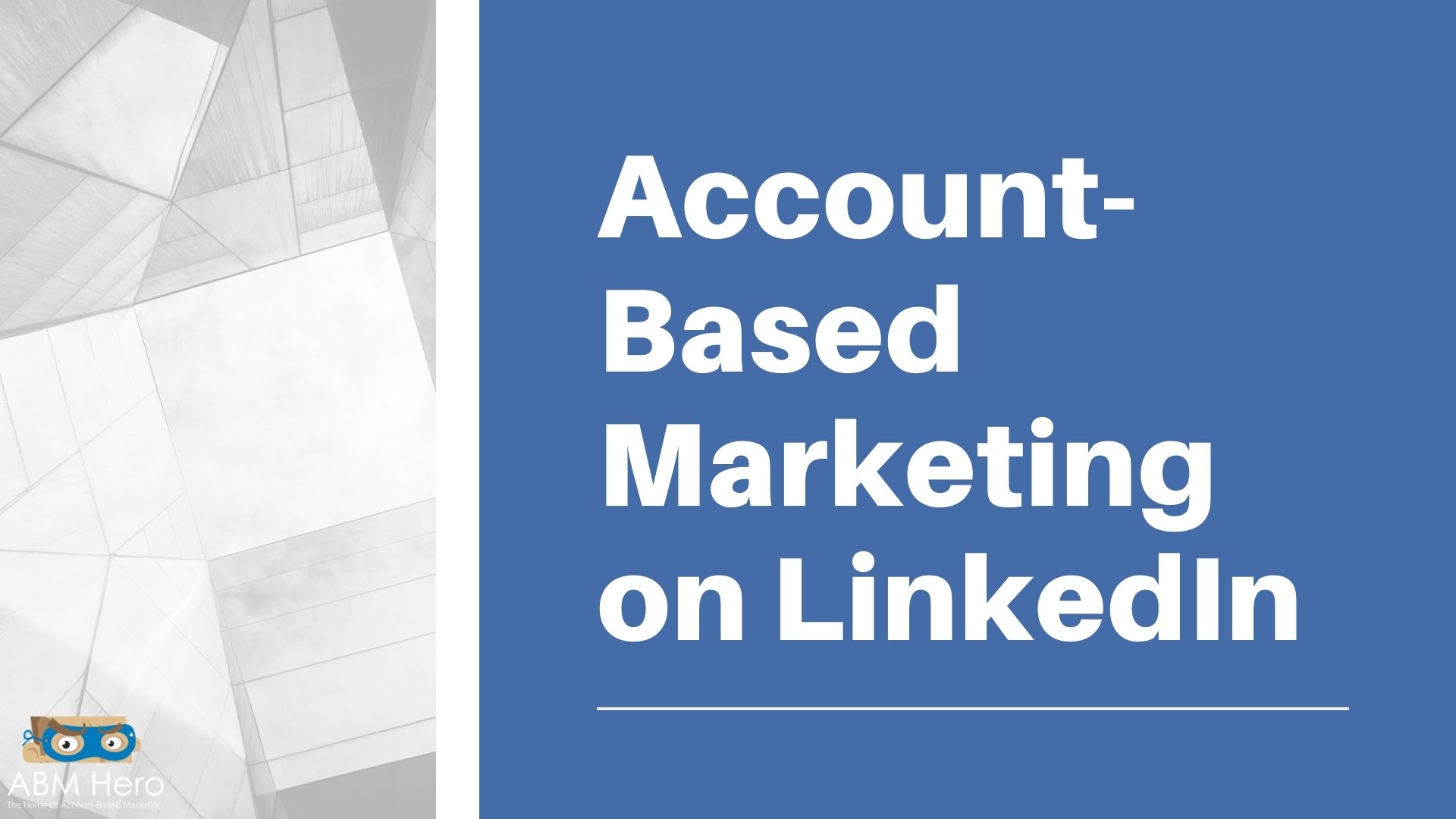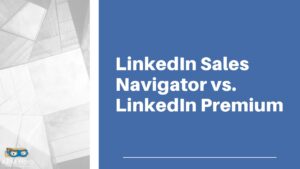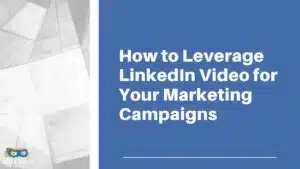Account-based marketing (ABM) on LinkedIn is becoming increasingly popular. ABM is a strategic approach to business marketing, but it is well-known among B2B companies.
It is a LinkedIn strategy that allows businesses to target their ideal customers with precision. By creating a tailored master plan for each account, businesses can maximize their chances of success with potential customers.
LinkedIn is the perfect platform for ABM, as it allows businesses to target their audience with precision. LinkedIn’s powerful targeting tools make it easy to identify and reach the right people within key accounts.
In this article, we will share how you can use Linkedin to level up your marketing game and provide a valuable contribution to your target audience.
What is Account-Based Marketing on LinkedIn?
Account-based marketing (ABM) is a strategic approach to B2B marketing, whereby all marketing activities are focused on specific accounts and specific decision-makers within those accounts.
ABM is all about identifying and targeting the right accounts and then engaging with those accounts in a highly personalized way.
LinkedIn is the perfect platform for executing an ABM strategy. With LinkedIn, you can target your prospects based on their job titles, company size, and other factors.
You can also use LinkedIn to create customized target lists and create targeted ads and sponsored updates.
The key to a successful ABM strategy on LinkedIn is to personalize your interactions with your prospects. Use their names, mention their company, and talk about their pain points.
How to Use LinkedIn for Account-Based Marketing on LinkedIn
LinkedIn offers a unique opportunity for account-based marketing. With its vast database of business professionals, LinkedIn is the perfect place to target your prospects.
It also allows you to target people based on their interests and behaviors. For example, you can target people who have visited your website or who are interested in your products or services.
The first step is to create a list of target accounts. These are the businesses that you want to do business with. After you have created your list, you can start targeting them with LinkedIn ads.
Once you sparked the interest of your target audience, you should craft personalized content that speaks to their language. When it resonates with them, they would most likely reach out and that’s how you provide them with more valuable content to solve their problems and position yourself as the expert that knows the solution.
The Benefits of Account-Based Marketing on LinkedIn
Account-based marketing (ABM) is a strategic approach to B2B marketing in which an organization focuses its resources on a defined set of accounts within a market.
Account-based marketing on LinkedIn offers several advantages over other marketing strategies, including:
Increased ROI
ABM typically delivers a higher ROI than other marketing strategies, because it allows you to target your prospects more accurately.
You’ll achieve higher ROI by investing in your account, should you choose to do so.
However, you should consider including free targeting in your paid campaigns, especially when you’re just starting. This way, you can direct your resources where they’re most needed.
Greater Engagement
Account-based Management on LinkedIn helps you engage with your prospects more effectively, resulting in better leads and more conversions.
You only talk to people that fit your criteria. When you send a personal message to them, they are more likely to engage. It can be a simple exchange of chats on loose afternoon breaks but it builds a profound connection which could probably be a chance to start introducing your products and services.
Improved Customer Retention
Once your target audience is engaged, they feel comfortable with you.
Hence, ABM can help you to retain your current customers by providing them with the highest level of new B2B marketing strategy, or you want to improve your existing one, then you need to consider account-based marketing.
The Process of Account-Based Marketing
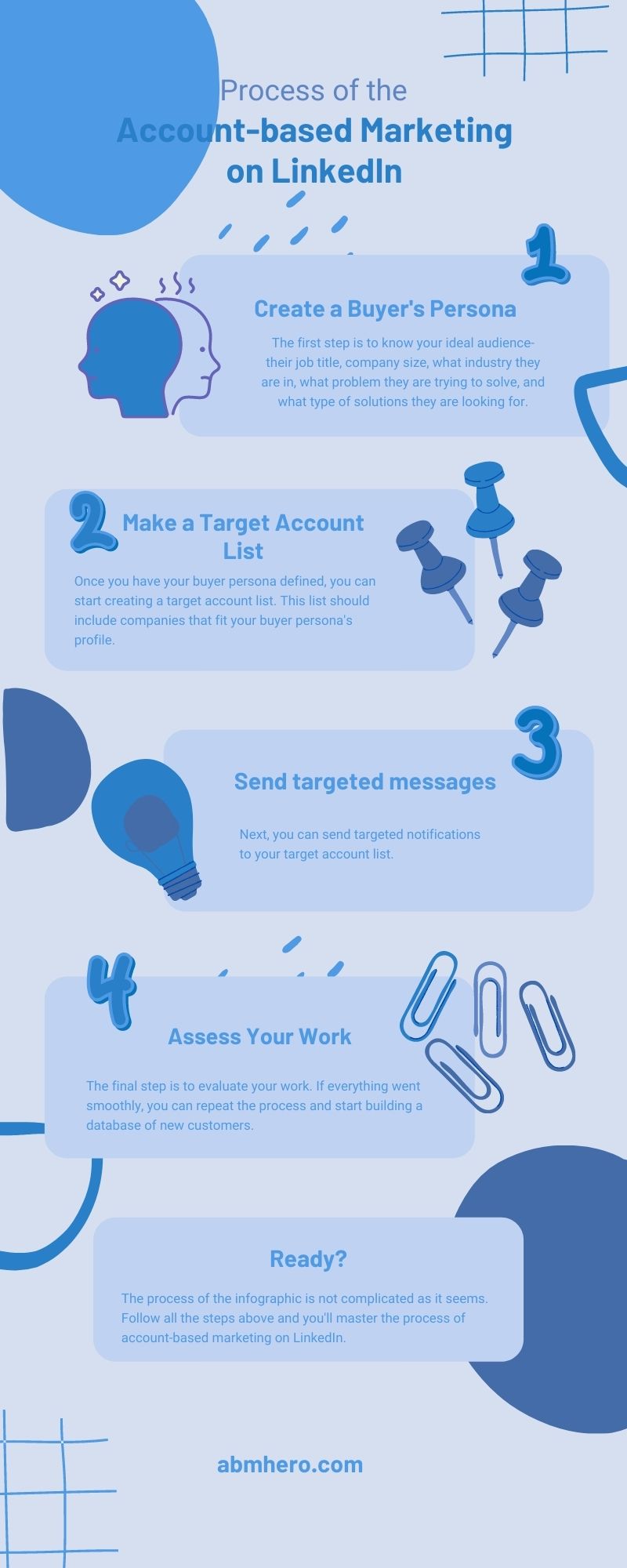
Step 1: Create a Buyers Persona
The first step is to create a buyer persona. It is a profile of your ideal customer that allows you to understand your target audience by knowing more about them and what keeps them going.
You need to know their job title, company size, what industry they are in, what problem they are trying to solve, and what type of solutions they are looking for.
You can find all of this information using LinkedIn’s Sales Navigator which simplifies the gathering of information in just a few clicks.
Step 2: Create a Target Account List
Once you have your buyer persona defined, you can start creating a target account list. This list should include companies that fit your buyer persona’s profile.
Maintain a spreadsheet file to store all the important information or use Customer Relationship Management (CRM) tools to build a systematic process of contacting your prospects.
Step 3: Send targeted messages
Next, you can send targeted notifications to your target account list. There are two ways to do this- either to send them a connection request or to promote your message through ads.
This message should be written with the intention to strike a conversation with your target prospect and form a rapport eventually. You can define these notifications by using the following four criteria:
Timing
Timing is the key to receiving replies that lead you to more conversations. When you send a message, send it on the hours that it has a higher chance that it will be noticed. Part of creating a buyer’s persona is understanding what time of the day do they usually work? Are your prospects a morning person, or a night owl? Do they have strict hours of the day or do they work on the fly?
When you send a notification, you should do it when the situation calls for it. For example, you might send a last-minute notification to a customer who committed to purchase at the last minute. This lets the prospect know that you are still in a relationship with them even though they are not actively looking for your product.
Location
If you intend to reach your target prospects through ads, be sure to take note of where they are coming from.
Where did the users go? Did they click on a link or open a page? You need to determine where your prospect is and try to reach them where they are likely to be influenced.
The location of a person reveals somewhat their identity and this gives you a hint on how to approach them.
Issue
What problem are you helping your customer solve? This is likely to be the most important criteria in deciding how much you should charge for your service. You need to be able to answer this question to determine your worthiness as a business opportunity.
Be sure that your message encourages your target audience to open up with their challenges. Let them talk about their problems and don’t push your agenda too early on in the conversation.
Just be sure to remember their pain points as these are essential recipes for you to offer yourself as the person who knows the solution and you are ready to help them solve it.
Solution
What solution are you offering to the problem your customer is trying to solve? This is also likely to be one of the most important factors in deciding how much you charge for your service.
The more resources you can offer to help your customer, the less they will have to pay for you.
Step 4: Assess Your Work
The final step is to evaluate your work. Did you reach all of your target audiences? Did you help them find what they were looking for? Did they commit to a solution? Assessing your work helps you find out the lapses in your strategy and pinpoint the actions that work.
If your answer to the questions mentioned above is yes, you can repeat the process and start building a database of new customers.
LinkedIn for B2B Sales
LinkedIn is an essential social media tool for business-to-business (B2B) sales professionals. There are several steps you can take to start using LinkedIn for ABM:

1. Identify your key accounts. Start by identifying the accounts that are most important to your business. These might be large accounts with lots of potential business, or key accounts that represent a significant portion of your business (i.e., a single account that represents 25% of your business).
2. Create an account for each of your key accounts. If you already have an existing account, log in to see which areas you can improve. Consider new profile pictures, names, dates of birth and areas of interest.
3. Find prospects in your target audience. You can do this by going to LinkedIn’s Sales Navigator and entering your industry or geographic area. Then, click the search button.
4. Educate your buyers. Once you’ve identified a few prospects, you can message them, to inform your existence. This is to remind them about the benefits of using your product or service.
5. Create more accounts if needed. You might need to create more than one account to meet the needs of your business. For example, if you plan to market to different audiences, you’ll need an account for each.
6. Schedule or make an account on each of your key accounts. Now, you can visit the individual pages of your prospects to keep track of what you’re doing.
7. Monitor your campaigns. Look at the results of the work you’ve done so far. Are there any negative results? Did you find what you were looking for?
8. Evaluate your campaigns. At the end of a period, assess the performance of each of your campaigns. Did you achieve the goals you set for each account? Can you make any changes?
9. Create a plan for future activities. What is the next thing you need to do to improve your campaigns?
10. Keep a log of your activities. You can use this to retrospectively review what happened before, and look at potential problems that could have occurred.
The Types of Metrics
 LinkedIn provides two types of metrics that can be used to identify and target prospects for ABM: account insights and lead insights.
LinkedIn provides two types of metrics that can be used to identify and target prospects for ABM: account insights and lead insights.
Account Insights
Account insights include information such as the number of employees at a company and the company’s industry.
These numbers are useful for businesses in numerous ways, including comparing between companies, finding new customers for the company, and understanding what markets a company is running in.
It helps you filter the people you want to reach out to according to their account type making your strategy more organized and systematic.
Lead Insights
Lead insights include information such as the titles of people at a company and their email addresses.
LinkedIn can be used to identify and target prospects for ABM by using both account and lead insights. For example, a company could use LinkedIn to identify the number of employees at a target company.
By using both account and lead insights, companies can quickly identify prospects who may fit their products or services. They can also identify prospects who may influence decision-making at the company.
Final Words
Account-based marketing on LinkedIn can be extremely successful for businesses if done correctly. It is important to identify and target the right accounts, create targeted content, and track results. By carefully targeting and personalizing content, you can create a successful ABM strategy on LinkedIn.

